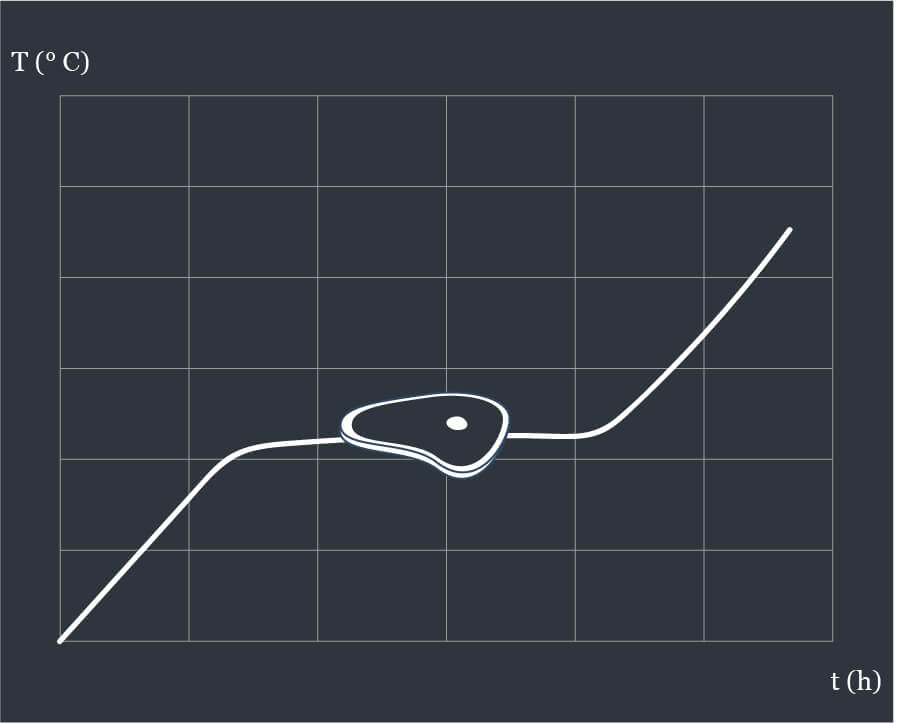The Stall is a phase that takes place during a low n’ slow cook, i.e. when cooking meat on the grill using indirect heat. A large chunk of meat like brisket, pork butt or a roast will go through the stall during a cook. What you see is that the temperature, after having steadily risen for an hour, all of a sudden stops increasing. The temperature curve goes flat. That happens even though the grill has the same temperature as when starting out.
This can cause stress among newbies as well as seasoned pit masters, and it is quite easy to start firing up the grill to run hotter, to compensate for the stall. This usually leads to dry meat, so stay calm.
What happens when the temperature curve goes flat is the same as when us humans sweat; the sweat on the surface of the skin allow us to cool off. In the case of food the juices are forced out to the surface (because of the grill heat), whereby it evaporates and therefore cools off the meat. That is why the temperature stalls for so long. Sooner or later the temp will start rising again.
The Texas Crutch
What you can do, if in a rush, is to force the meat past the stall. You do that by preventing the “sweating” by braising the meat instead. When the meat has reached a certain inner temperature you simply wrap it snugly in two layers of aluminum foil, and leave it on the grill until nearly done. This method is called the Texas crutch.
It isn’t necessary, but can be used to shorten the cook time. Remember to unwrap the meat when done and give it some high direct heat to firm up the bark.
Two ways of wrapping
As mentioned above you can wrap the meat at the beginning of the stall, when the meat’s internal temperature is 140° F. You shorten the overall cook time by 1-3 hours, and make sure the meat stays moist and juicy.
You can also wrap the meat after the stall, when the meat’s internal temperature is 160° F. You don’t necessarily shorten the cook time, but you keep it moist and juicy, with the added benefit of being able to build bark for a few more hours before wrapping.
When I wrap I always do it after the stall, since I want real good bark.

